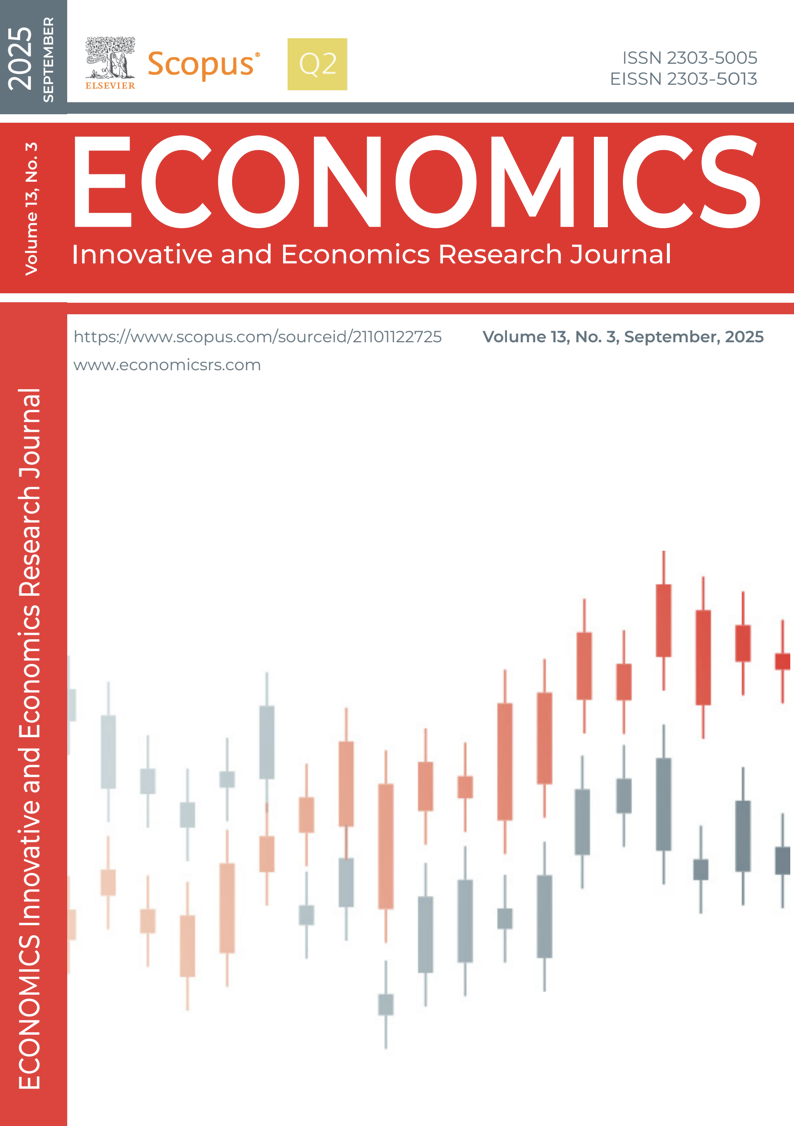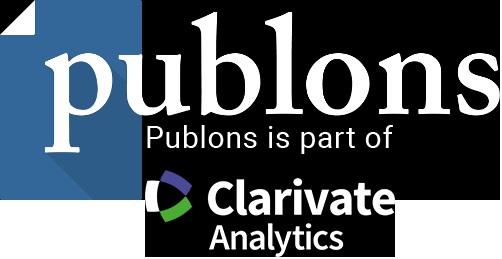THE INFLUENCE OF AI-DRIVEN SUSTAINABLE HUMAN RESOURCE MANAGEMENT ON EMPLOYEE CREATIVE PERFORMANCE: ANALYZING IDIOSYNCRATIC DEALS IN THE INDIAN INFORMATION TECHNOLOGY SECTOR
DOI:
https://doi.org/10.2478/eoik-2025-0081Keywords:
AI-enabled HR practices, Employee creative performance,, Idiosyncratic deals, SEM Analysis, Indian IT industry, SPSS AMOSAbstract
The research explores how AI-powered sustainable HR practices
influence employee creative performance within India’s IT sector
through the mediating role of individualized agreements. The research
applies structural equation modeling to examine survey data from 360
IT professionals based on the frameworks of the Job Demands-Re-
sources model and Social Exchange Theory. AI-based training and
performance management systems raise creative performance levels
and show that ideals partially mediate these relationships. The re-
search results reveal contextual differences because ideals mediate
recruitment effects and performance management outcomes but show
no significant mediation for training interventions, likely because of
the sector’s inclination toward standardized learning approaches. The
research delivers significant theoretical advancements by analysing
AI-HRM systems in emerging economies and exploring personal
work arrangements’ limits in tech-heavy settings. These insights serve
as essential guidance for practitioners deploying HR technologies that
successfully combine standardization with personalization to promote
workplace innovation. The research reveals surprising results about
the minimal direct influence of sustainability orientation. The research
advocates for integrated strategies to synchronize sustainability initia-
tives with innovation objectives within India’s IT sector.
References
Agrawal, A., Gans, J., & Goldfarb, A. (2017). What to expect from artificial intelligence. MIT Sloan
Management Review, 58(3), 23-26. http://mitsmr.com/2jZdf1Y
Aguinis, H. (2022). Performance management (5th ed.). Chicago Business Press.https://tuannguhanhson.
com/uploads/download/2019_10/herman_aguinis_performance_managementz-lib.org.pdf
Aguinis, H., & Glavas, A. (2012). What We Know and Don’t Know About Corporate Social Respon-
sibility: A Review and Research Agenda. Journal of Management, 38(4), 932-968. https://doi.
org/10.1177/0149206311436079
Amabile, T. M. (2018). Creativity in context: Update to the social psychology of creativity. Routledge.
Amabile, T.M. (1996). Creativity In Context: Update To the Social Psychology Of Creativity
(1st ed.). Routledge. https://doi.org/10.4324/9780429501234
Anand, S., Vidyarthi, P. R., Liden, R. C., & Rousseau, D. M. (2010). Good citizens in poor-quality rela-
tionships: Idiosyncratic deals as a substitute for relationship quality. Academy of Management
Journal, 53(5), 970–988. https://doi.org/10.5465/AMJ.2010.54533176
Bakker, A. B., & Demerouti, E. (2017). Job demands-resources theory: Taking stock and looking for-
ward. Journal of Occupational Health Psychology, 22(3), 273–285. https://doi.org/10.1037/
ocp0000056
Balasubramanian, N., Ye, Y., & Xu, M. (2020). Substituting Human Decision-Making with Machine
Learning: Implications for Organizational Learning. Academy of Management Review, 47(3),
–465. https://doi.org/10.5465/amr.2019.0470
Barney, J. (1991). Firm resources and sustained competitive advantage. Journal of Management, 17(1),
–120. https://doi.org/10.1177/014920639101700108
Barrett, P. (2007). Structural equation modelling: Adjudging model fit. Personality and Individual Dif-
ferences, 42(5), 815–824. https://doi.org/10.1016/j.paid.2006.09.018
BCG. (2023). The future of work in India’s IT sector. Boston Consulting Group. https://web-assets.bcg.
com/8c/b7/35b5c1ca4948990d8866c707cda1/bcg-nasscom-future-of-work-report.pdf
Bekiros, S. (2024). A Hypergame Model of Conflict Cusp Helix for Noncooperative Boundedly Rational
Multi-Polar Actors Using Deep Adversarial Reinforcement Learning and Misperception Infor-
mation Strategies. ECONOMICS - Innovative and Economics Research Journal, 13(3). https://
doi.org/10.2478/eoik-2025-0010
Bentler, P. M. (1990). Comparative fit indexes in structural models. Psychological Bulletin, 107(2),
–246. https://doi.org/10.1037/0033-2909.107.2.238
Black, J. S., & van Esch, P. (2020). AI-enabled recruiting: What is it, and how should a manager use it?
Business Horizons, 63(2), 215–226. https://doi.org/10.1016/j.bushor.2019.12.001
Blau, P. M. (2017). Exchange and power in social life. In Routledge eBooks. https://doi.
org/10.4324/9780203792643
Browne, M. W., & Cudeck, R. (1993). Alternative ways of assessing model fit. Sociological Methods &
Research, 21(2), 230–258. https://doi.org/10.1177/0049124192021002005
Budhwar, P., Malik, A., De Silva, M. T. T., & Thevisuthan, P. (2022). Artificial intelligence – challenges
and opportunities for international HRM: a review and research agenda. The International Journal
of Human Resource Management, 33(6), 1065–1097. https://doi.org/10.1080/09585192.2022.203
Byrne, B. M. (2016). Structural equation modeling with AMOS: Basic concepts, applications, and pro-
gramming (3rd ed.). Routledge. https://doi.org/10.4324/9781315757421
Cappelli, P., & Tavis, A. (2022). HR goes agile. Harvard Business Review, 96(2), 46–52. https://hbr.
org/2018/03/hr-goes-agile
Cropanzano, R., & Mitchell, M. S. (2005). Social exchange theory: An interdisciplinary review. Journal
of Management, 31(6), 874–900. https://doi.org/10.1177/0149206305279602
The Influence of Ai-Driven Sustainable Human Resource Management on Employee Creative Performance:
Analyzing Idiosyncratic Deals in The Indian Information Technology Sector
De Prins, Peggy & Van Beirendonck, Lou & Vos, Ans & Segers, Jesse. (2014). Sustainable HRM: Bridg-
ing theory and practice through the ‘Respect Openness Continuity (ROC)’-model. Management
revue. 25. 263-284. https://doi.org/10.1688/mrev-2014-04-Prins
Deloitte. (2023). Global human capital trends 2023: The rise of the social enterprise. Deloitte Insights.
https://www.deloitte.com/us/en/insights/topics/talent/human-capital-trends/2023.html
Diamantopoulos, A., & Siguaw, J. A. (2000). Introducing LISREL. London: Sage Publications. https://
doi.org/10.4135/9781849209359
Dillman, D. A., Smyth, J. D., & Christian, L. M. (2014). Internet, Phone, Mail, and Mixed-Mode Surveys:
The Tailored Design Method, 4th Edition. (n.d.). Wiley.com. https://www.wiley.com/en-fr/In-
ternet%2C+Phone%2C+Mail%2C+and+Mixed-Mode+Surveys%3A+The+Tailored+Design+-
Method%2C+4th+Edition-p-9781118456149
Dutta, D., Mishra, S. K., & Tyagi, D. (2022). Augmented employee voice and employee engagement
using artificial intelligence-enabled chatbots: a field study. The International Journal of Human
Resource Management, 34(12), 2451–2480. https://doi.org/10.1080/09585192.2022.2085525
Grover P., Kar A. K., Dwivedi Y. K. (2022). Understanding artificial intelligence adoption in operations
management: Insights from the review of academic literature and social media discussions. An-
nals of Operations Research, 308(1–2), 177–213. https://doi.org/10.1007/s10479-020-03683-9
Ehnert, I., Parsa, S., Roper, I., Wagner, M., & Muller-Camen, M. (2015). Reporting on sustainability and
HRM: a comparative study of sustainability reporting practices by the world’s largest compa-
nies. The International Journal of Human Resource Management, 27(1), 88–108. https://doi.or
g/10.1080/09585192.2015.1024157
Fornell, C., & Larcker, D. F. (1981). Evaluating structural equation models with unobservable vari-
ables and measurement error. Journal of Marketing Research, 18(1), 39–50. https://doi.
org/10.1177/002224378101800104
Garg, S., & Fulmer, I. (2017). Ideal or an ordeal for organizations? The spectrum of co-worker re-
actions to idiosyncratic deals. Organizational Psychology Review, 7(4), 281-305. https://doi.
org/10.1177/2041386617733136 (Original work published 2017)
Gefen, D., Straub, D., & Boudreau, M.-C. (2000). Structural equation modeling and regression: Guidelines for
research practice. Communications of the AIS, 4(7), 1–77. https://doi.org/10.17705/1CAIS.00407
Hair, J. F., Black, W. C., Babin, B. J., & Anderson, R. E. (2019). Multivariate data analysis (8th ed.). Cen-
gage. https://eli.johogo.com/Class/CCU/SEM/_Multivariate%20Data%20Analysis_Hair.pdf
Hair, J. F., Hult, G. T. M., Ringle, C. M., & Sarstedt, M. (2022). A primer on partial least squares
structural equation modeling (PLS-SEM) (3rd ed.). SAGE. https://uk.sagepub.com/en-gb/eur/a-
primer-on-partial-least-squares-structural-equation-modeling-pls-sem/book270548
Hayes, A. F. (2018). Introduction to mediation, moderation, and conditional process analysis (2nd ed.).
Guilford Press. https://www.guilford.com/books/Introduction-to-Mediation-Moderation-and-Con-
ditional-Process-Analysis/Andrew-Hayes/9781462549030?srsltid=AfmBOor4tp3aZ7vCk-
ld-5ClI9oUEGOfHqTAsiq9JnQ2vob7XWNI-6QQO
Henseler, J., Ringle, C. M., & Sarstedt, M. (2015). A new criterion for assessing discriminant validity
in variance-based structural equation modeling. Journal of the Academy of Marketing Science,
(1), 115–135. https://doi.org/10.1007/s11747-014-0403-8
Hornung, S., Rousseau, D. M., Weigl, M., Muller, A., & Glaser, J. (2014). Redesigning Work through
Idiosyncratic Deals. European Journal of Work and Organizational Psychology, 23, 608-626.
https://doi.org/10.1080/1359432X.2012.740171
Hu, L., & Bentler, P. M. (1999). Cutoff criteria for fit indexes in covariance structure analysis: Conven-
tional criteria versus new alternatives. Structural Equation Modeling, 6(1), 1–55. https://doi.org
/10.1080/10705519909540118
Jackson, Susan & Renwick, Douglas & Jabbour, Charbel & Muller-Camen, Michael. (2011). State-of-
the-Art and Future Directions for Green Human Resource Management: Introduction to the
Special Issue. Zeitschrift fuer Personalforschung. German Journal of Research in Human Re-
source Management. 25. 99-116. https://doi.org/10.1177/239700221102500203
Thangaraju K. & Palani P. / Economics - Innovative and Economics Research Journal, doi: 10.2478/eoik-2025-0081
Jia, L., & Hou, Y. (2024). AI-powered training and employee creativity: The mediating role of skill mas-
tery. Human Resource Management, 63(1), 89–105. https://doi.org/10.1002/hrm.22145
Kenny, D. A., Kaniskan, B., & McCoach, D. B. (2015). The performance of RMSEA in models with
small degrees of freedom. Sociological Methods & Research, 44(3), 486–507. https://doi.
org/10.1177/0049124114543236
Kline, R. B. (2023). Structural equation modeling in neuropsychology research. In G. G. Brown, B. Crosson,
K. Y. Haaland, & T. Z. King (Eds.), APA handbook of neuropsychology: Neuroscience and neuro-
methods, 681–698. American Psychological Association. https://doi.org/10.1037/0000308-034
Kock, N. (2015). Common method bias in PLS-SEM: A full collinearity assessment approach. Interna-
tional Journal of e-Collaboration, 11(4), 1–10. https://doi.org/10.4018/ijec.2015100101
Kramar, R. (2022). Sustainable human resource management: six defining characteristics. Asia Pacific
Journal of Human Resources, 60(1), 146–170. https://doi.org/10.1111/1744-7941.12321
MacCallum, R. C., Browne, M. W., & Sugawara, H. M. (1996). Power analysis and determination of
sample size for covariance structure modeling. Psychological Methods, 1(2), 130–149. https://
doi.org/10.1037/1082-989X.1.2.130
Malik, A., De Silva, M. T. T., Budhwar, P., & Srikanth, N. R. (2021). Elevating talents’ experience
through innovative artificial intelligence-mediated knowledge sharing: Evidence from an
IT-multinational enterprise. Journal of International Management, 27(4), 100871. https://doi.
org/10.1016/j.intman.2021.100871
Marler, J. H., & Boudreau, J. W. (2017). An evidence-based review of HR analytics. International Journal
of Human Resource Management, 28(1), 3–26. https://doi.org/10.1080/09585192.2016.1244699
Marmad, T., & Ritahi, O. (2025). Spatial Modeling of the Impact of Human and Public Capital on Employ-
ment Convergence Between Regions in Morocco: Time Period From 2010 To 2023. ECONOMICS
- Innovative and Economics Research Journal, 13(2), 5–24. https://doi.org/10.2478/eoik-2025-0028
Marsh, C. J. (2004). Key Concepts for Understanding Curriculum. London: Falmer Press.
https://doi.org/10.4324/9780203326893
McKinsey. (2022). The future of work in India: Seizing the AI opportunity. McKinsey Global Institute.
https://www.mckinsey.com/featured-insights/future-of-work
Nader AlOqaily, A., Farid Qawasmeh, E., & Tawalbeh, J. (2025). The Effect of Implementing AI on Job Burn-
out Through the Mediating Role of Work-Life Balance in the Context of HRM. ECONOMICS - In-
novative and Economics Research Journal, 13(2), 465–484. https://doi.org/10.2478/eoik-2025-0049
NASSCOM. (2023). Strategic review of India’s IT industry: Navigating digital transformation. NASSCOM.
https://nasscom.in/knowledge-center/publications/technology-sector-india-2023-strategic-review
Peterson, R. A., & Kim, Y. (2013). On the relationship between coefficient alpha and composite reliabil-
ity. Journal of Applied Psychology, 98(1), 194–198. https://doi.org/10.1037/a0030767
Podsakoff, P. M., MacKenzie, S. B., & Podsakoff, N. P. (2012). Sources of method bias in social science
research and recommendations on controlling it. Annual Review of Psychology, 63, 539–569.
https://doi.org/10.1146/annurev-psych-120710-100452
Preacher, K. J., & Hayes, A. F. (2008). Asymptotic and resampling strategies for assessing and compar-
ing indirect effects in multiple mediator models. Behavior Research Methods, 40(3), 879–891.
https://doi.org/10.3758/BRM.40.3.879
PwC India. (2022). India’s IT talent landscape: Challenges and opportunities. PwC India. https://www.
pwc.in/assets/pdfs/hopes-and-fears/india-workforcehopes-and-fearssurvey-2022.pdf
Ren, Zhengyu & Hussain, Rana. (2022). A mediated–moderated model for green human resource
management: An employee perspective. Frontiers in Environmental Science. 10. https://doi.
org/10.3389/fenvs.2022.973692
Renwick, Douglas & Redman, Tom & Maguire, Stuart. (2012). Green Human Resource Management:
A Review and Research Agenda. International Journal of Management Reviews. 15. https://doi.
org/10.1111/j.1468-2370.2011.00328.x
The Influence of Ai-Driven Sustainable Human Resource Management on Employee Creative Performance:
Analyzing Idiosyncratic Deals in The Indian Information Technology Sector
Ringle, C. M., Wende, S., & Becker, J.-M. (2020). SmartPLS 3. SmartPLS GmbH. Ringle, C.M., Wende, S.
and Becker, J.M. (2015) SmartPLS 3. SmartPLS GmbH, Boenningstedt. http://www.smartpls.com
Rousseau, D. M. (2005). I-deals: Idiosyncratic deals that employees bargain for themselves. M.E.
Sharpe. https://www.routledge.com/I-deals-Idiosyncratic-Deals-Employees-Bargain-for-Them-
selves/Rousseau/p/book/9780765610430?srsltid=AfmBOoqcRKuaZenjYKOQz6cOtDPOVI-
yrRSjx2FUx2ASjKuWk74ansV_n
Sarstedt, M., Hair, J. F., & Ringle, C. M. (2022). Partial least squares structural equation modeling.
Handbook of Market Research, 1(1), 1–47. https://doi.org/10.1007/978-3-319-05542-8_15-2
Schaufeli, W. B., & Taris, T. W. (2014). A critical review of the job demands-resources model: Impli-
cations for improving work and health. In G. F. Bauer & O. Hämmig (Eds.), Bridging occupa-
tional, organizational and public health: A transdisciplinary approach (pp. 43–68). Springer
Science + Business Media. https://doi.org/10.1007/978-94-007-5640-3_4
Schermelleh-Engel, K., Moosbrugger, H., & Müller, H. (2003). Evaluating the Fit of Structural Equation
Models: Tests of Significance and Descriptive Goodness-of-Fit Measures. Methods of Psycho-
logical Research, 8(2), 23–74. https://www.stats.ox.ac.uk/~snijders/mpr_Schermelleh.pdf
Spreitzer, G. M. (1995). Psychological empowerment in the workplace: Dimensions, measurement, and
validation. Academy of Management Journal, 38(5), 1442–1465. https://doi.org/10.2307/256865
Strohmeier, Stefan. (2020). Digital human resource management: A conceptual clarification.
German Journal of Human Resource Management: Zeitschrift für Personalforschung. 34.
https://doi.org/10.1177/2397002220921131
Tambe, P., Cappelli, P., & Yakubovich, V. (2019). Artificial Intelligence in Human Resources Man-
agement: Challenges and a Path Forward. California Management Review, 61, 15-42.
https://doi.org/10.1177/0008125619867910
Ulrich, D., & Dulebohn, J. H. (2015). The future of HR: Rethinking capabilities and roles. Human Re-
source Management Review, 25(2), 95–101. https://doi.org/10.1016/j.hrmr.2015.01.002
Villajos, E., Tordera, N., & Peiró, J. M. (2019). HRM systems and employee affective commitment: The
role of I-deals. Personnel Review, 48(3), 839–856. https://doi.org/10.1108/PR-03-2018-0094
Wernerfelt, B. (1984). A resource-based view of the firm. Strategic Management Journal, 5(2), 171–180.
https://doi.org/10.1002/smj.4250050207
Zhang, X., & Bartol, K. M. (2010). Linking empowering leadership and employee creativity: The in-
fluence of psychological empowerment, intrinsic motivation, and creative process engagement.
Academy of Management Journal, 53(1), 107–128. https://doi.org/10.5465/amj.2010.48037118
Zhou, J., & Hoever, I. J. (2023). Understanding the dynamic interplay between actor and context for cre-
ativity: Progress and desirable directions. Annual Review of Organizational Psychology and Or-
ganizational Behavior, 10, 109–135. https://doi.org/10.1146/annurev-orgpsych-120920-055457
Downloads
Published
How to Cite
Issue
Section
License
Copyright (c) 2025 ECONOMICS - INNOVATIVE AND ECONOMICS RESEARCH JOURNAL

This work is licensed under a Creative Commons Attribution-NonCommercial-NoDerivatives 4.0 International License.























